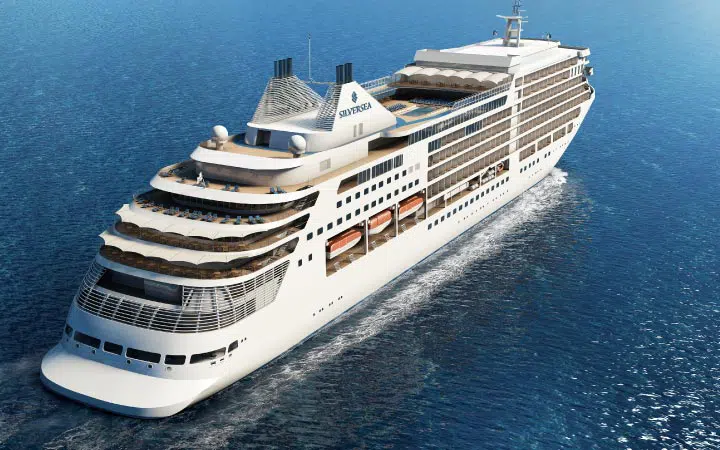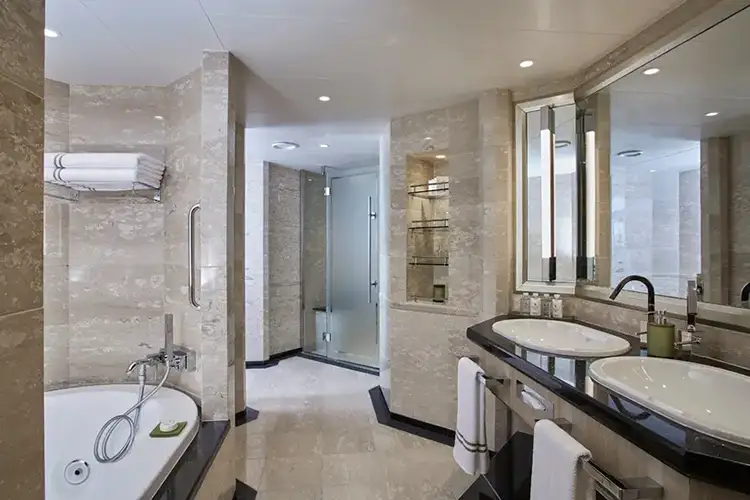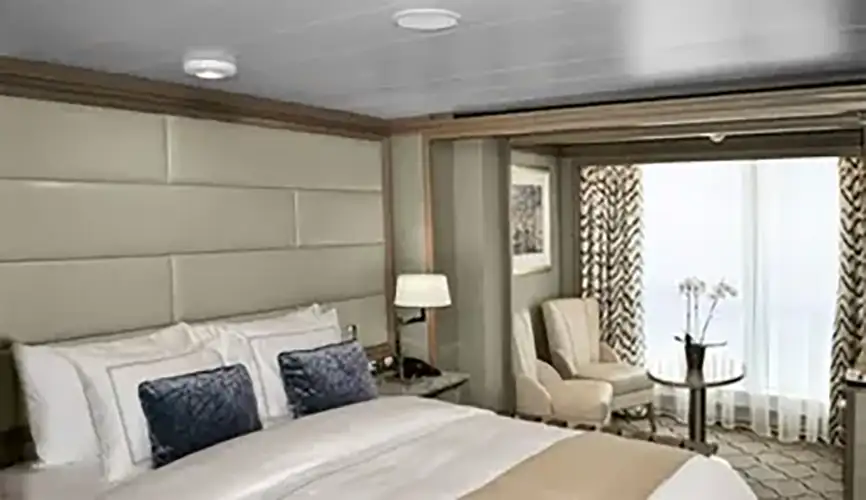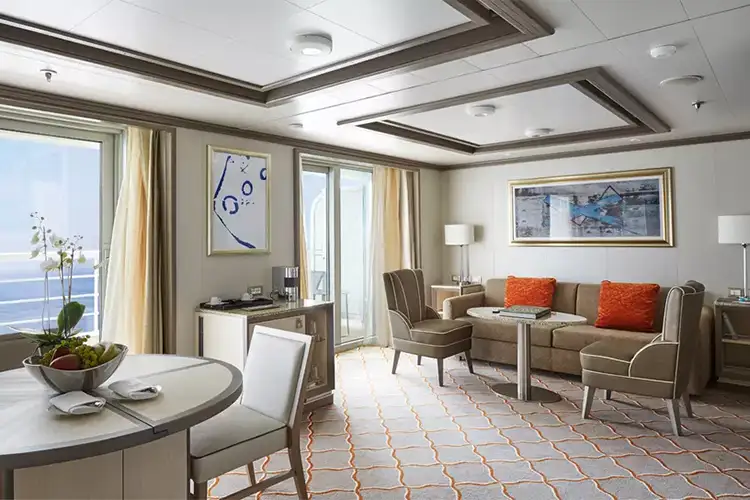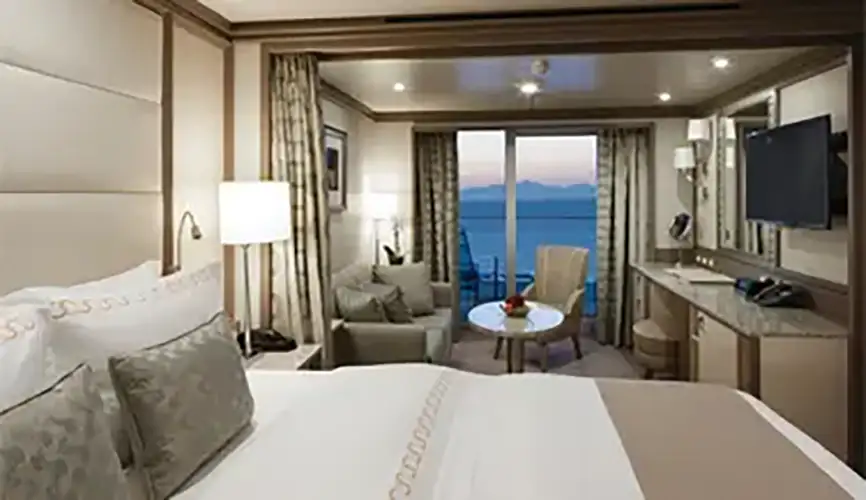Silversea Mediterranean: 12 nights from Dakar with Silver Dawn
Apr 30, 2027
Senegal, Cape Verde, Spain, Morocco, Portugal
Cruise itinerary
Departure Port: Dakar ➞
Landing: Lisbon
-
Friday, April 30, 2027 - 11:00 PMDakar
-
Saturday, May 1, 2027Navigation
-
Sunday, May 2, 2027 8:00 AM - 7:00 PMPraia
-
Monday, May 3, 2027Navigation
-
Tuesday, May 4, 2027Navigation
-
Wednesday, May 5, 2027 8:00 AM - 7:00 PMSanta Cruz de Tenerife
-
Thursday, May 6, 2027 8:00 AM - 5:00 PMArrecife
-
Friday, May 7, 2027 9:00 AM - 11:00 PMAgadir
-
Saturday, May 8, 2027Navigation
-
Sunday, May 9, 2027 8:00 AM - 6:00 PMCasablanca
-
Monday, May 10, 2027 8:30 AM - 11:00 PMCadiz
-
Tuesday, May 11, 2027 8:00 AM - 6:30 PMPortimao
-
Wednesday, May 12, 2027 7:00 AMLisbon
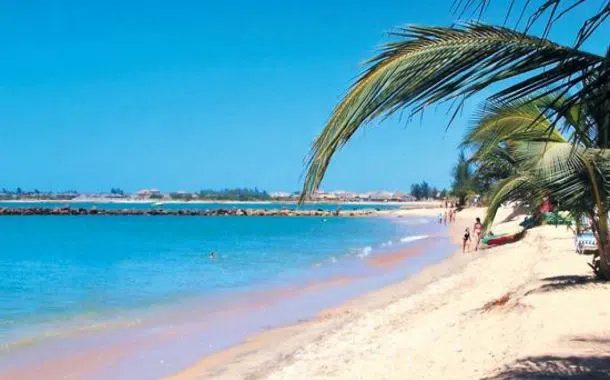
Dakar
Explore West Africa from Dakar!Set sail on an enriching journey from Dakar, Senegal, a vibrant and bustling port city on the West African coast. Known for its colorful markets, historical sites, and lively culture, Dakar offers a truly unique starting point for exploring the diverse landscapes and rich heritage of Africa. Prepare for an adventure that combines cultural immersion with serene sea travel, promising profound discoveries and unforgettable experiences.
The city of Dakar is located along the Atlantic coast of Senegal, on an ancient volcano whose eruption gave rise to the Cap-Vert Peninsula. Other islands are located nearby, including that of Gorée, to the south, those of the Madeleine, to the west and Ngor to the north. An ancient fishing village, Dakar or Dahar means "tamarind" in Wolof (one of the six national languages of Senegal). Today the administrative, political, military, economic, social and cultural metropolis is a cosmopolitan, African and European city, with more than two million inhabitants. Several dates that mark the history of the city and the region, are between the 16th and 19th centuries, the highlight of the slave trade. The city was officially founded on May 25, 1857 by Pinet LAPRADE. The first cadastral map of Dakar was developed in June 1858. 4 years later, in June 1862, they formed a new alignment plan of the area. The city of Goree was founded in 1872 and on April 4, 1960, Dakar became the capital of Senegal. This metropolis has many places to offer. Tourists will be mainly attracted by the African Art Museum and the Antenna Gallery. Other important sites, in colonial style, are the Town Hall outside the Presidential Palace, jealously guarded by its guards in traditional clothes. Finally, don't miss the Dakar Mosque and the Hann natural park, with its numerous animals. Many typical products of the Dakar region are available to holidaymakers in various shops. Wide choice of souvenirs including fabrics, wooden sculptures, jewelry, sandals, bags, paintings, bronze objects, ceramics and musical instruments. Music, dance and traditional wrestling are part of the Dakar landscape. You will also notice the presence of a large shopping center (Plaza Mar), inaugurated in 2010, inside you will find a wellness center, a games room and a bowling alley. French is the official language and the only one taught in the public school system.
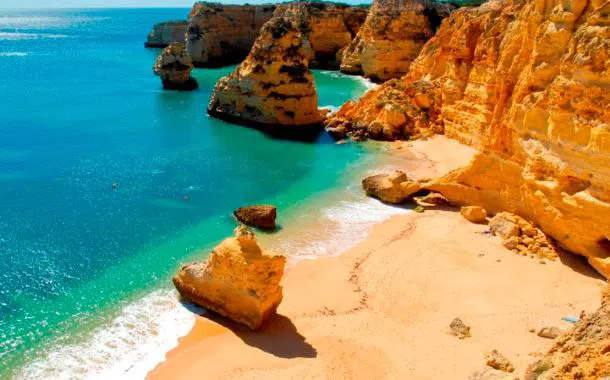
Praia
Praia is the capital of the Republic of Cape Verde, located on the island of Santiago, the largest of the archipelago, west of Senegal. The country is divided into charming little unofficial districts, the most important are Plateau (centre), Achada, Varzea, Safende and Sucupira (bazaar area). At the Sucupira market, you can buy exotic souvenirs, such as Panu or Babosa land, as well as a variety of handicrafts. Its great strength is the port, which, in addition to its development and the fishing industry, allows the export of coffee, sugar cane and tropical fruit. Thanks to its pleasent climate, It is possible to visit the city all year round. Even during the so-called rainy season (from mid-August to mid-October), it can happen that there is no rainfall for weeks. Thanks to ocean currents, Cape Verde has the lowest temperatures of all West African countries. Cape Verdeans are very fond of music, especially zouk, Funana and local HipHop. They are able to dance energetically throughout the night and one can easily join in. The city has several colonial-era buildings. The main attractions in the city center include Albuquerque Square, the old town hall built in 1920, the presidential palace, built at the end of the 19th century, the Monument of Diogo Gomes, the Portuguese navigator who discovered the island of Santiago in 1460. Apart from those mentioned, its beautiful beaches and good nightlife make this place an idyllic destination.Praia is the capital of the Republic of Cape Verde, located on the island of Santiago, the largest in the archipelago, west of Senegal.
This country is divided into charming unofficial small districts, the most important of which are the Plateau (center), Achada, Varzea, Safende, and Sucupira (bazaar area).
At the Sucupira market, among local and culinary products, you can buy exotic souvenirs, such as the earth of Panu or that of Babosa, as well as a variety of handicrafts. Its great strength is the port, which, in addition to the development and fishing industry, allows the export of coffee, sugar cane, and tropical fruits.
In this locality, it is possible to think of visiting it at any time, although the climate is pleasant all year round. Even during the so-called rainy season (from mid-August to mid-October), it can happen that there is no precipitation for weeks. Thanks to the ocean currents, Cape Verde has the lowest temperatures of all the countries in West Africa.
The Cape Verdeans love music very much, in particular, the zouk, the Funana, and the local HipHop. They are able to dance with energy all night and you can easily join in.
The city has several colonial-era buildings. The main attractions in the city center include Albuquerque Square, the old town hall built in 1920, the presidential palace, built at the end of the 19th century, the Monument to Diogo Gomes, the Portuguese navigator who discovered the island of Santiago in 1460.
In addition to those named, it does not have any particular important places to visit, but it is thanks to the beautiful beaches and the beautiful nightlife that makes this place an idyllic destination.
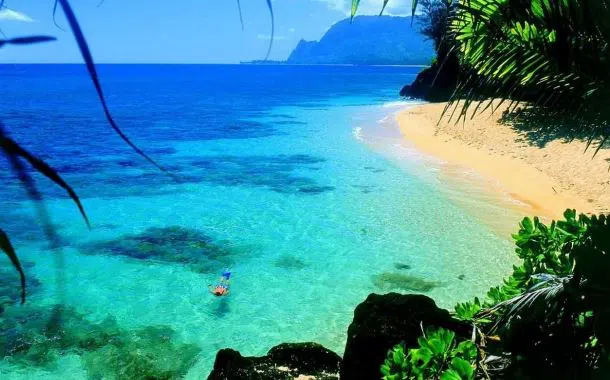
Santa Cruz de Tenerife
Santa Cruz de Tenerife, the capital of Tenerife, is located in the north-east of the island. Its pleasent climate and commercial areas make the city the perfect place for walking and enjoying long hours of relaxation. There are lots of things to visit in the city such as its avenues, parks and Henry Moore's most famous sculptures, hidden treasures and historic buildings such as the Church of the Conception or the Carta Palace.
Do not miss the opportunity to taste local cuisine. Santa Cruz de Tenerife is a beautiful port located in Tenerife, the largest of the western islands of the Canary Islands archipelago. In the area around the port, there are wide avenues, squares, exotic green areas and some examples of modern architecture. At the heart of the city, near the sea, there is Plaza de España, built in the mid-20th century and once the site of the San Cristobal Castle (16th century).
The oldest part of the city is rich in religious monuments. The construction of the Church of San Francisco, one of the best examples of the Baroque style, began in the 17th century. The Church of Pilar, dated back to the 18th century, stands on the remains of an ancient temple. The city has also some green areas filled with exotic tree species. The Garcia Sanabria Park houses an important outdoor Sculpture Museum.
Another not to be missed place is the Maritime Park, a recreational area designed by architect César Manrique and located in the old Canary Islands commercial basin. Also known as the Black Castle, this circular defensive bastion was built in the first half of the 17th century with volcanic stones. From a naturalistic point of view, Tenerife is an island of contrasting landscapes. The wide beaches of fine sand in the south of the island give way to lush vegetation in the north.
Every year, the outfits of the island's capital prepare to host Carnival, declared International Tourist Interest and one of the most spectacular in Spain. Its privileged location makes it possible to enjoy beautiful beaches such as Las Teresitas, get to know the city of San Cristóbal de La Laguna, declared a UNESCO World Heritage Site, or visit Teide National Park, the symbol of the island.
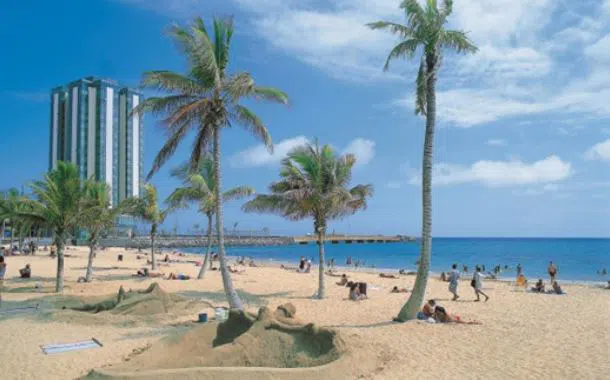
Arrecife
The capital of Lanzarote Island, in Canary Island, Arrecife was originally a small fishing village that now primarily relies on tourism. Lanzarote is one of the most wild and natural islands of the Canary and is of volcanic origin. Arrecife, the capital of Lanzarote, since the second half of the 19th century, is now the administrative and commercial center of the island.
Arrecife is a lively and cosmopolitan city full of culture and history, located on the eastern-central coast of the island. Initially known as a small fishing village in the 15th century, the area continued to grow until it became the capital of the island in 1852. Today, it is known as a wonderful holiday and shopping paradise. The city presents itself to travelers as a peaceful, cheerful and clean town. In its harbor, which is an area of intense commercial activity, two large fortresses, San Gabriel and San Jose, stand as reminders of the constant pirate attacks.
Other interesting monuments include the Castle of San Gabriel, built offshore and connected to the city by drawbridge, the San Juan Castle, and the Castillo del Hambre. Inside the Castello del Hambre, there is the international Museum of Contemporary Art, which exhibits works by the great artist Cesar Manrique.
The center of Arrecife is surrounded by some of the city’s best tourist attractions, such as the Parish of San Ginés Obispo and the shopping district of Calle Real. Heading north along the Coast, you will find the city’s ports: Puerto Naos, a fishing port, and the main port called Puerto de los Marmoles, the third most important port in the Canary Islands.
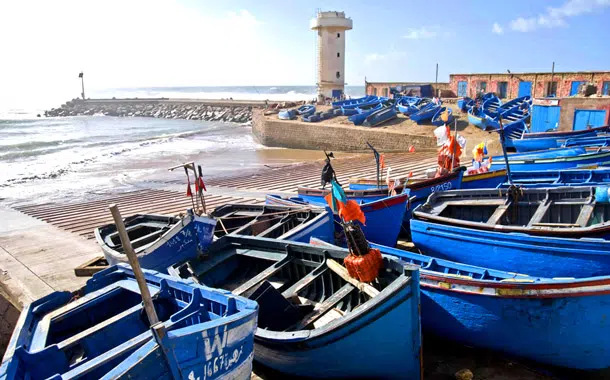
Agadir
Splendid beaches, large avenues with palm trees, excellent resort hotels, all kinds of sports activities are the main features of Agadir. It has an excellent covered souk, which sells local specialties. The fish market is worth a visit to see the people at work. Day trips to the desert are a popular choice for cruises that stop here.
Known for its beautiful beaches and thriving tourism industry, Agadir is also an important gateway to the inland attractions of the Sahara desert. It presents an interesting combination of old and new: a long Moroccan tradition and culture combined with modern services offer a lively mix for the cruise passenger.
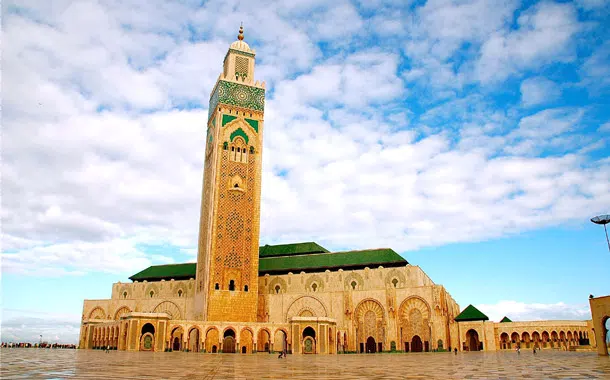
Casablanca
Casablanca is the cosmopolitan, industrial and economic heart of Morocco and represents a developing Nation.
Casablanca is where money was made, where industry is, where art galleries show the best contemporary art and where stylists have a window on the world. The old pirate lair is projected into the future, showing its riches and successes. Casablanca is full of contradictions. It is home to suffocating traffic jams, social problems and slums, as well as wide avenues, well-kept public parks, fountains and a surprising colonial architecture. Rich Hispano-Moresque, Art Deco and modernist gems to be discovered in the city center are the modernist symbol of Casablanca, like the huge and incredibly ornate Hassan II Mosque.
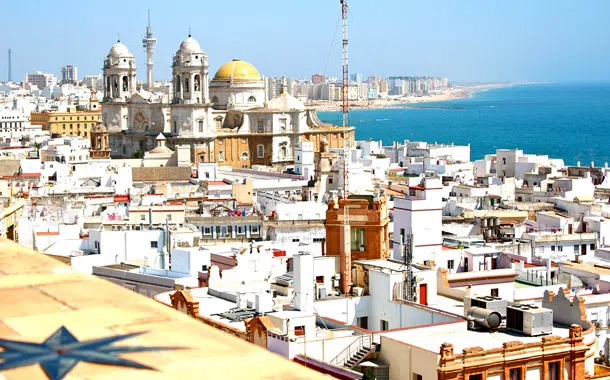
Cadiz
Cadiz is a port city with wide boulevards, squares and gardens with an atmosphere rich in history
Cadiz is an elegant city offering buildings dated back to XVIII and XIX Centuries. The City has a long and charming history: discover its monuments, the museums and all the amazing places where you can taste good food and have a drink. What makes Cadiz special it’s the people that are open, have a great culture and are independent. The majority of them enjoy life and the company of their friends in the many bars and squares of the city.
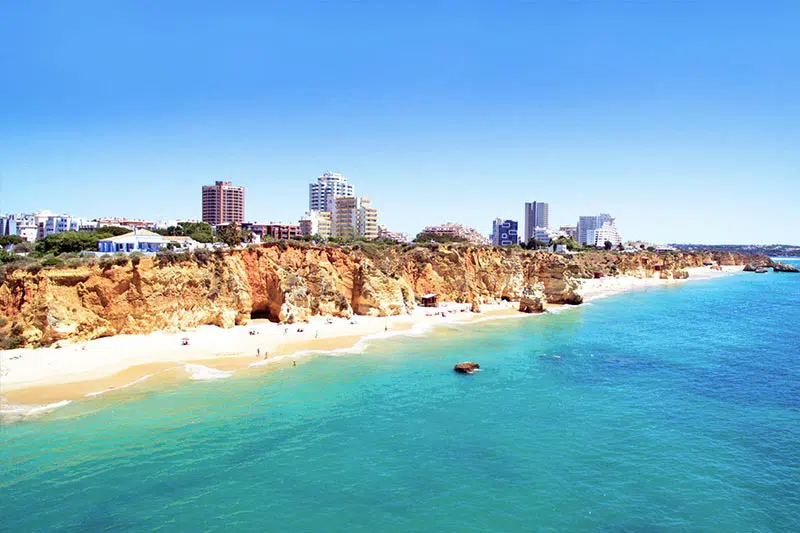
Portimao
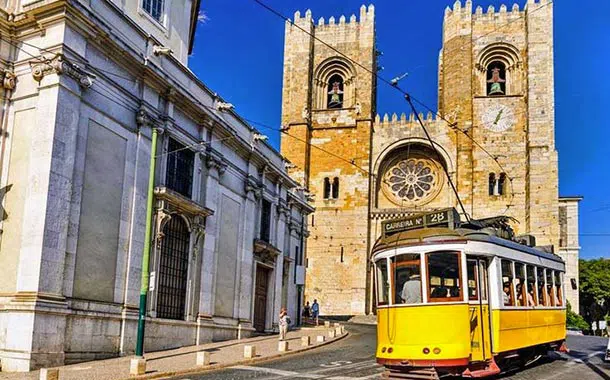
Lisbon
Perched on steep slopes overlooking the Tagus River, Lisbon offers all the pleasures you'd expect from Portugal's main attraction.
The capital of Portugal, Lisbon (in Portuguese Lisboa) has experienced a great rebirth in recent years, with a lively and flourishing contemporary culture. Perched on the coast of the Atlantic Ocean, Lisbon is one of the rare European cities that face the ocean and use water as an element that defines the city. Lisbon enchants travelers with its white limestone buildings, intimate alleys and an ancient charm that makes it a popular destination all year round.
